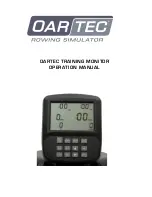
FXAlgs #150Ð153: Choruses
Algorithm Reference-51
Block diagram of left channel of Dual Chorus 1. Right channel is similar.
The left and right channels pass through their own chorus blocks. There may be cross-coupling between the
channels. For Chorus 2 and Dual Chorus 2, each channel has three moving taps which are summed, while Chorus
1 and Dual Chorus 1 have one moving tap for both channels. In the dual mono choruses you can pan the taps to left
or right. The summed taps (or the single tap of Chorus 1) is used for the wet output signal. The summed tap outputs,
weighted by their level controls, are used for feedback to the delay line input. The input and feedback signals go
through a one-pole lowpass filter (HF Damping) before going entering the delay line.
The Wet/Dry control is an equal power cross-fade. The Output Gain parameters affect both wet and dry signals.
For each of the LFO tapped delay lines, you may set the tap levels, the left/right pan position, delays of the
modulating delay lines, the rates of the LFO cycles, and the maximum depths of the pitch detuning. The LFOs
detune the pitch of signal copies above and below the original pitch. The depth units are in cents, or 1/100ths of a
semitone.
In the stereo Chorus 1 and Chorus 2, the relative phases of the LFOs modulating the left and right channels may be
adjusted.
Delay for a Single LFO
From Right
Channel
To Right
Channel
Dry
Feedback
Tap Level
Wet
Wet
From Right
Pans
To Right
Output Sum
High Freq
Damping
Delay
Pan
L Input
L Output
Tap Dly
Delay Input
Shortest
Delay
Longest
Delay
Center
of LFO
LFO Xcurs
LFO Xcurs
Range of LFO
















































